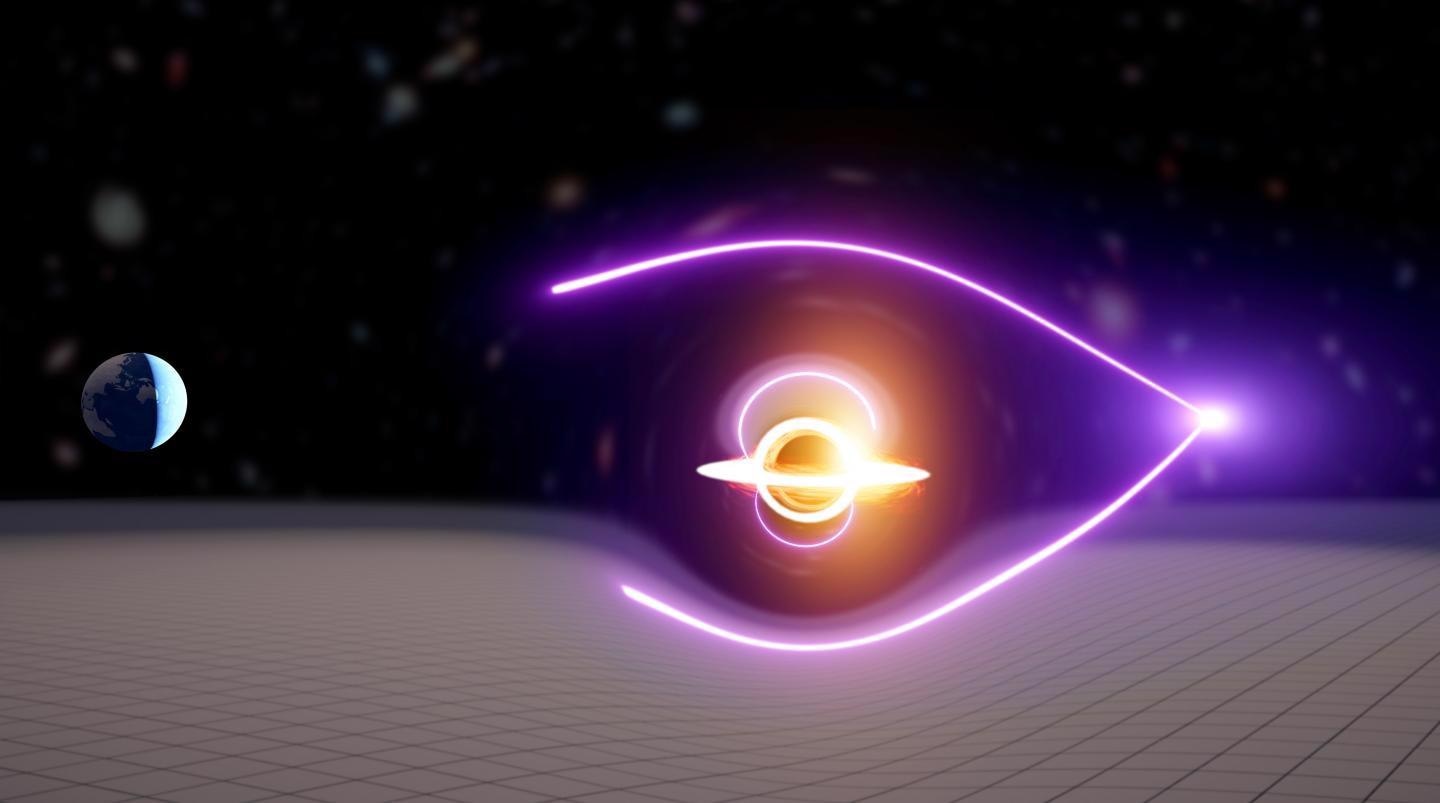Mar 30 2021
A recently discovered, new black hole has set a record, not for being the biggest or the smallest one, but for being positioned exactly in the middle.
 The new black hole was found through the detection of a gravitationally lensed gamma-ray burst. Image Credit: Artist impression—Carl Knox, OzGrav.
The new black hole was found through the detection of a gravitationally lensed gamma-ray burst. Image Credit: Artist impression—Carl Knox, OzGrav.
The newly found 'Goldilocks' black hole forms part of a broken link between two classes of black holes: small black holes formed from stars and supermassive giants found in the nucleus of most galaxies.
As part of a collaborative effort, scientists from the University of Melbourne and Monash University have discovered a black hole with roughly 55,000 times the mass of the sun, a so-called 'intermediate-mass' black hole.
The finding was recently reported in a paper titled “Evidence for an intermediate mass black hole from a gravitationally lensed gamma-ray burst” in the Nature Astronomy journal.
According to James Paynter, lead author of the study and a PhD student at the University of Melbourne, the latest discovery offers insights into the formation of supermassive black holes.
While we know that these supermassive black holes lurk in the cores of most, if not all galaxies, we don’t understand how these behemoths are able to grow so large within the age of the Universe.
James Paynter, PhD Student, University of Melbourne
The new black hole was discovered by identifying a gravitationally lensed gamma-ray burst. The gamma-ray burst is a half-second flash of high energy light from a pair of merging stars.
It was seen to have a tell-tale 'echo' that is caused by the intervening intermediate-mass black hole, which tends to bend the path of the light on its way to Earth. Thus, astronomers observe the same flash twice.
Robust software created to identify black holes from gravitational waves was adapted to confirm that both the flashes are images of the same object.
This newly discovered black hole could be an ancient relic—a primordial black hole—created in the early Universe before the first stars and galaxies formed.
Eric Thrane, Study Co-Author and Professor, School of Physics and Astronomy, Monash University
“These early black holes may be the seeds of the supermassive black holes that live in the hearts of galaxies today,” added Thrane, who is also the Chief Investigator for the ARC Centre of Excellence for Gravitational Wave Discovery (OzGrav).
According to Professor Rachel Webster, co-author of the study and a gravitational lensing pioneer from the University of Melbourne, the results of the study could help researchers achieve much greater strides.
Using this new black hole candidate, we can estimate the total number of these objects in the Universe. We predicted that this might be possible 30 years ago, and it is exciting to have discovered a strong example.
Rachel Webster, Study Co-Author and Professor, University of Melbourne
The team predicts that about 46,000 intermediate-mass black holes could be found close to the Milky Way galaxy.
Journal Reference:
Paynter, J., et al. (2021) Evidence for an intermediate-mass black hole from a gravitationally lensed gamma-ray burst. Nature Astronomy. doi.org/10.1038/s41550-021-01307-1.